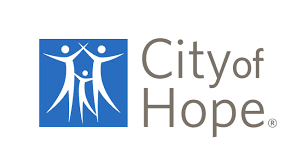- About Us
- Advertise / Support
- Editorial Board
- Contact Us
- CancerNetwork.com
- TargetedOnc.com
- OncLive.com
- OncNursingNews.com
- Terms & Conditions
- Privacy
- Do Not Sell My Information
© 2025 MJH Life Sciences™ and CURE - Oncology & Cancer News for Patients & Caregivers. All rights reserved.
Keytruda Plus Lenvima Offer Anti-Tumor Activity in Mesothelioma Subset
Ashley Chan, assistant editor for CURE®, has been with MJH Life Sciences since June 2023. She graduated with a B.A. in Communication Studies from Rowan University. Outside of work, Ashley enjoys spending time with family and friends, reading new novels by Asian American authors, and working on the manuscript of her New Adult novel.
The Keytruda-Lenvima combination had promising anti-tumor activity for patients with pleural mesothelioma following disease progression after chemotherapy.
The treatment combination of Keytruda (pembrolizumab) and Lenvima (lenvatinib) demonstrated clinical activity as second- and third-line treatment for patients with pleural mesothelioma who had disease progression after receiving chemotherapy, according to results from a study.
Malignant mesothelioma, as defined by Mayo Clinic, is a rare cancer that forms in the layer of tissue that surrounds the majority of internal organs, but often affects the pleura, which is the tissue that surrounds the lung. Although there are treatments available, research has not yet found a cure for pleural mesothelioma.
Traditional treatment for patients with pleural mesothelioma included a total thoracotomy, “which would be the complete removal of one lung surface,” explained Dr. Ajaz Khan, a medical oncologist and enterprise chair of medical oncology at City of Hope Atlanta, Chicago and Phoenix. “That may or may not include a pericardiectomy, which also removes the lining of the lungs (and) it depends on how much actual volume of disease there is within the lung.”
In a study published in Cancer, researchers determined that the phase 2 trial, PEMMELA, demonstrated promising anti-tumor activity in some patients with pleural mesothelioma. Specifically, patients received the treatment combination of Keytruda and Lenvima following disease progression after receiving at least one line of chemotherapy that contained platinum and pemetrexed.
In the trial, the median age was 71 years and there were 33 people who identified as men and five who identified as women.
The study’s primary endpoint (the main result measured at the end of a study to identify whether the treatment was effective) was objective response rate (ORR; the percentage of participants who had a partial or complete response to treatment).
Based on the results, the study’s researchers found that there was an ORR of 58%, which exceeded the targeted ORR of 40%. Specifically, by the data cutoff of Jan,. 31, 2023, at a median follow-up of 17.7 months, 22 patients, or 58%, had an objective response to treatment, with an independent review showing an objective response in 17, or 45% of patients, according to the study.
An aspect of the study that Khan found interesting was the “availability of immunotherapy (Keytruda) with a tyrosine kinase inhibitor (Lenvima), acting also as a vascular endothelial growth factor receptor, and providing synergy in terms of improving the overall response rate … in the small group of patients.
“But regardless, I think the data do demonstrate both clinical activity and improvement in terms of moving the field forward for patients with malignant pleural mesothelioma in the second- and third-line setting.”
The results from the study also reflected a median progression-free survival (period during and after treatment when a patient lives with disease but it does not worsen) of 5.6 months when assessed by a local investigator and 5.7 months when assessed by an independent reviewer. The median overall survival (period from diagnosis or start of treatment when a patient remains alive) in the respective study was 12.8 months.
The most common mild to severe immunotherapy-related side effects determined by researchers included high blood sugar, diarrhea, joint stiffness or pain and myocarditis, which is inflammation in the middle layer of the heart wall.
Patients with pleural mesothelioma should continue communicating with their doctors and care teams and ask questions about whether they were affected by occupational exposure, genomic and germline testing to see if the disease was a genetically inherited mutation and other available options, such as clinical trials, according to Khan.
For more news on cancer updates, research and education, don’t forget to subscribe to CURE®’s newsletters here.
Related Content:



